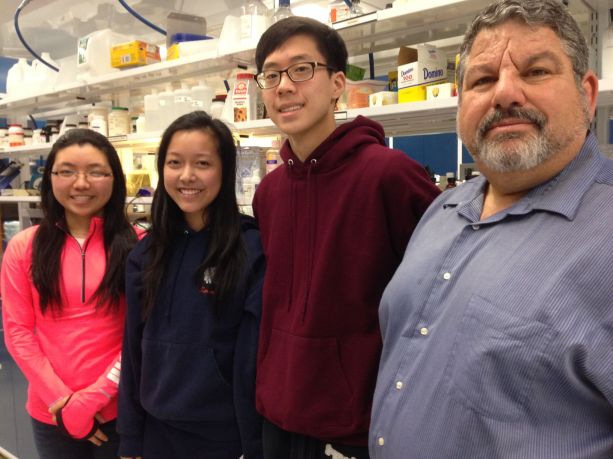Two summers ago, Manhasset High School Senior Typher Yom went to visit his uncle in Korea, leaving behind frustrating experiences in conducting scientific research that he said was greeted with descriptions of being “rudimentary” in competitions he entered.
By watching his uncle, Soo Young Park, work as a chemistry professor at the University of Seoul, Yom hoped he could find some sort of wrinkle within the research that he could exploit in the lab once he returned stateside.
He did – in the corrosion of various metals to produce electricity – and it worked.
Park and fellow Manhasset seniors Jessica Kim and Emma Ying Dong were each named among 300 semifinalists in the annual Intel Science Talent Search, a national competition that awards more than $1.6 million in research awards.
“It was a project that seemed to come out of nowhere,” said Park, a Village of Munsey Park resident. “I thought, maybe I should take this topic a bit more seriously. I thought I’d take these hardest parts of this preexisting research and make it the center of my project.”
Semifinalists were announced online last Wednesday through the non-profit Society for Science & the Public, which administers the competition. Each semifinalist receives a $1,000 award and an additional $1,000 award goes to each student’s high school.
“All three students have truly complex projects, all 11 of our students that entered did,” said Peter Guastella, the Manhasset School District’s science research specialist and program advisor.
“For us, it’s been about consistently exciting students in school and getting them to strive toward excellence in their research,” he said.
The neighboring Roslyn and Great Neck school districts each had four semifinalists, the most among Long Island districts.
In the 25 years of Manhasset’s science research program, 48 students have been named Intel semifinalists, Guastella said.
“It’s not about production, but it’s good to see that our students have been successful,” he said. “Our program’s curriculum is sort of based around these competitions, but it’s all about working toward excellent research.”
Kim, a Village of Plandome Heights resident, said her research focused on harnessing solar energy through less expensive materials than are currently used in creating solar panels.
“It’s nowhere near perfect, and it’s new, so it’s not going to be perfect, but everyone is looking to find cheaper alternatives,” she said. “The price of oil may be dropping, but not necessarily [the price of] solar cells.”
She said “it was a nice surprise” to be named a semifinalist in the competition, admitting she had initially forgotten when the announcement would be made.
“The recognition is great,” she said. “It’s nice to be commended on the hard work you do. I’m definitely happy about it.”
Dong said she sought “a mechanical engineering approach to treating cancer,” successfully using neuroparticles and hyperthermia to shrink tumors in an search of alternative treatments to chemotherapy and other forms of radiation therapy.
“The tumors we used were 1.5 centimeters in diameter, similar to those found in common cancers at really any stage of cancer,” she said. “At this point, we would look to figure out how the cancer would metastasize after treatment.”
The Intel Science Talent Search contest began more than 70 years ago. Past winners include eight Nobel Laureates, five National Medals of Science winners, two Fields medalists and 12 MacArthur Foundation fellows.
Justin Rattner, the president of the Intel Foundation, said in a statement that semifinalists “exhibit the kind of passion, intellectual curiosity and ingenuity that energizes companies like ours.”
Intel will name 40 finalists on Jan. 21 who will then compete in Washington D.C. from March 5-11 for three medals of distinction awards of $150,000, three $75,000 second-place awards and three $35,000 third-place awards. All finalists receive at least $7,500. Winners would then attend a black-tie gala at the National Building Museum on March 10.
“If there is another door to be opened here, it would be very gratifying,” Yom said, “but this process has taught me that sometimes you have to go back to the basics. Sometimes, you just have to go to the foundation and work from there and it’ll work itself out.”

